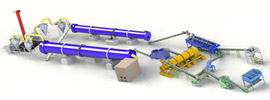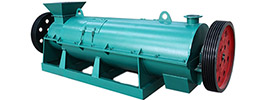Nitrate nitrogen, ammonia nitrogen, amide nitrogen and organic nitrogen are the most common types of nitrogen fertilizers we use in agriculture. They have their own advantages and disadvantages, so we have to master the skills of using them.
Nitrogen is one of the essential elements for plant growth. It must rely on various enzymes in the plant as well as the participation of various metal ions through light, undergoing a complex series of transformations and eventually synthesizing amino acids and proteins.
Let's start by understanding nitrate nitrogen.Plants have evolved over billions of years on earth it was first adapted to nitrate
nitrogen fertilization. This is because nitrogen accounts for about 78% of the air in nature. Lightning can synthesize nitric acid directly from the nitrogen and water in the air. This is the most primitive nitrate nitrogen fertilizer. This is why plants are first adapted to nitrate nitrogen fertilizer. Our synthetic nitrate fertilizers include ammonia nitrate, calcium ammonia nitrate, calcium nitrate, potassium nitrate and so on.
The advantage of these fertilizers is that they can be directly absorbed by the roots of plants, and they are fast-acting, so they are ideal for follow-up fertilization. The disadvantage is that it is easily lost by rain. In the case of poor soil permeability, it will be used for denitrification reaction. It will turn into nitrogen gas and volatilize.
Learn more about ammoniacal nitrogen fertilizers.Ammonia nitrogen fertilizer is the most important form of synthetic
nitrogen fertilizer. It is made by compressing air into ammonia and ammonia water, and then reacting with various acids. Ammonia chloride, ammonia nitrate, ammonia sulfate, ammonia bicarbonate and other fertilizers are produced. The roots of plants prefer nitrate nitrogen when they absorb nitrogen fertilizers. Only a small percentage of ammoniacal nitrogen fertilizers are directly absorbed by the roots. Most of the ammonia nitrogen fertilizer needs to be converted into nitrate nitrogen fertilizer by the action of nitrifying bacteria before it can be absorbed by plants. This is why the most appropriate ratio of nitrate to ammonia nitrogen is 10:1 when we apply nitrogen fertilizer. If the nitrate to ammonia ratio is out of balance, too much ammonia nitrogen fertilizer. It will antagonize the uptake of potassium, calcium and other elements. Boron fertilizer and other elements of absorption. Cause the occurrence of deficiency.
But ammonia nitrogen fertilizer is not useless. It has its own advantages. Because it needs to be transformed before it can be absorbed. Therefore, it has a long effect period. It is not easily lost by water. It is suitable for use as a base fertilizer.
Let's learn more about amide nitrogen.Acylamide nitrogen is a synthetic organic nitrogen fertilizer. It mainly refers to urea, which we often use. The pure nitrogen content of urea is as high as 46%. It is by far the largest use of nitrogen fertilizer species. In compound fertilizers, urea is used for almost all nitrogen fertilizers.
As we all know, urea is used in very large quantities. But its utilization rate is relatively low. As a follow-up fertilizer surface spreading utilization rate is only about 30%. As a base fertilizer, the utilization rate can reach about 40%, and its fertilization period can reach more than two months. So urea as a base fertilizer is more suitable. The effect is slow, it takes 3-7 days at room temperature. If it is in low temperature environment, it takes more than ten days.
 Let's analyze the reasons for the low use rate and slow start of urea.
Let's analyze the reasons for the low use rate and slow start of urea.First, watering or rain will lose some of it. Secondly, the nitrogen in urea has to be transformed twice to be absorbed by the crop. The first step is the conversion from amide nitrogen to ammonia nitrogen. That is, urea is converted into ammonia carbonate and ammonia bicarbonate by the action of urease. This step results in the volatilization of ammonia, which is also the step with the greatest loss of urea.
The second step is the volatilization of nitrogen in the ammonia to nitrate conversion.
But urea is used as a foliar spray nitrogen fertilizer, its absorption rate and absorption rate, is very high. It can start to take effect about one hour after spraying. Its absorption rate can reach more than 90%, and the absorption rate is about 20 times that of other inorganic nitrogen fertilizers.
Absorption principle and process: Because it is organic, it can enter the leaf cells directly without transformation. Under the action of ATP (adenosine triphosphate, which is a direct energy supplier for energy metabolism transfer), it is converted into carbamoyl phosphate and then hydrolyzed into amino acids: ornithine, citrulline and arginine, which are directly used by plants.
It is used in combination with potassium dihydrogen phosphate. It will give better results.
Urea as a foliar fertilizer. It has its unique advantages. However, the following points should be noted.
First, it is best not to use a concentration of more than three parts per thousand.
Second, it is best to use food-grade urea. Because the agricultural urea inside the diurea will make the plant protein denaturation, causing serious fertilizer damage!
Third, be sure to pay attention to the time of spraying. Before 10:00 am. After 4:00 p.m.
Again, to understand the organic nitrogen.Organic nitrogen mainly refers to manure such as
chicken manure, pig manure, as well as animal and plant residues and fish protein. It is converted by the principle of protein fermentation into amino acids or ammonia nitrogen. This is the reason why manure fermentation has an ammonia odor.
The advantage of using organic nitrogen fertilizer is that it has a long effect period, in some cases up to several years. Increase the organic matter content of the soil. Improve soil carbon and nitrogen ratio.
 Send us a Email
Send us a Email Wulong Industrial Cluster
Wulong Industrial Cluster Have any question?
Have any question?




















